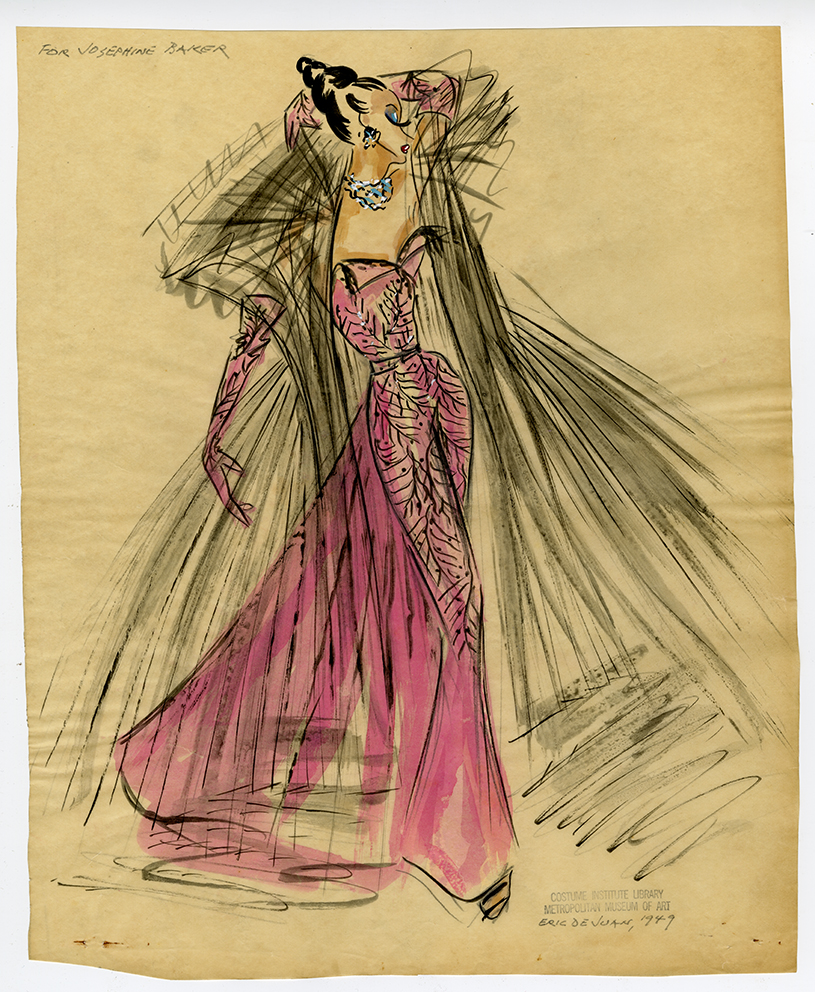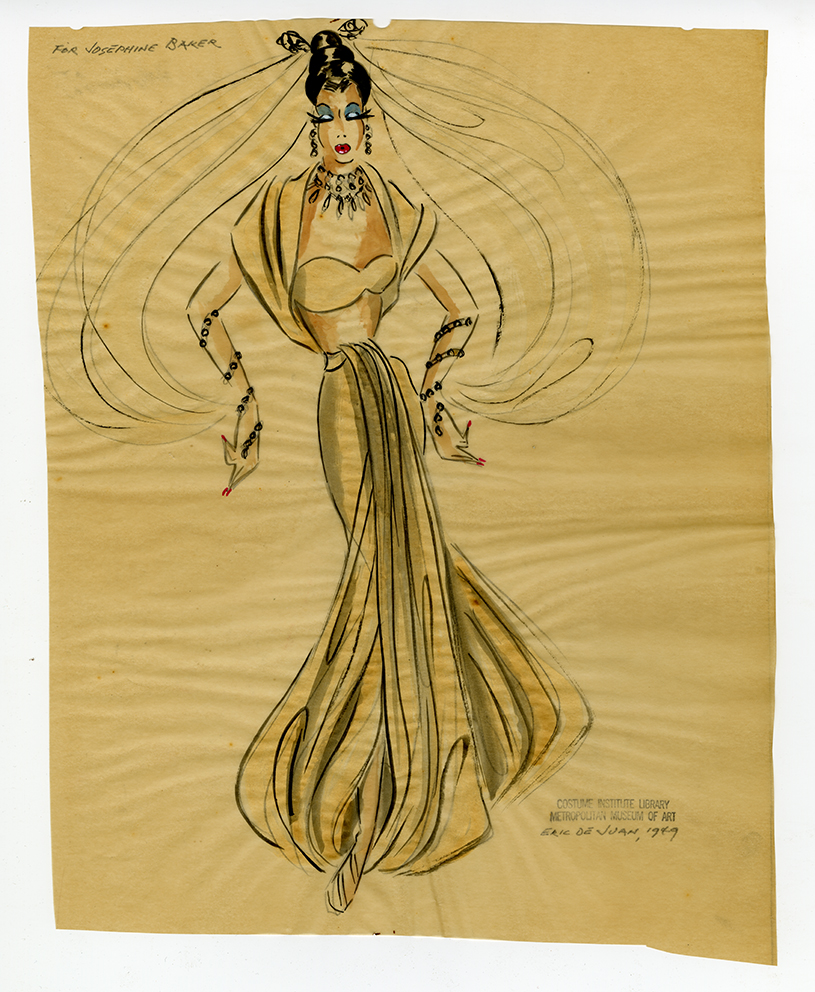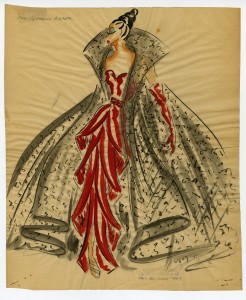I’m sure that most of you have heard by now about the extensive renovation of The Metropolitan Museum of Art’s Costume Institute, which has been recently renamed the Anna Wintour Costume Center. The $40 million renovation encompassed not only the public gallery spaces, but also the department’s highly-specialized library. Last year, we were the beneficiary of the Irene Lewisohn Costume Reference Library’s decision to de-accession a handful of their manuscript collections, including the archive of couturier Eric de Juan.
Even against the backdrop of an international jet set, de Juan cuts a striking figure. Born to a Cuban father and French mother, he spent time as a youth in both countries but was educated primarily in France. At the age of 15, he dismayed his parents with the proclamation that he intended to become a fashion designer; as the son of a wealthy family he was expected to take over his father’s successful import business. His grandmother—”a great French lady,”—felt differently, and backed her grandson’s dream whole-heartedly, converting a portion of her sumptuous home into a workroom and salon for him.
Sometime around 1939, perhaps fleeing pending occupation of Paris, de Juan established a couture house in Cuba, where he became known as the “Mainbocher of Havana.” There he says, “I was very spoiled…It got so that I could choose my own customers,” from the millionaire glitterati who flocked to the popular resort destination during the 1940s and 1950s. After being jailed six times by Castro for his “association with wealthy clients,” and having his business and property seized by the state—his home was converted into the Soviet Embassy—de Juan fled to the US in February of 1964 with no money and just a single suitcase.
de Juan’s first job stateside was with the noted 7th Avenue coat and suit manufacturer Ben Zuckerman, where he worked for three years. In 1967, he would be chosen to replace Leslie Morris as the in-house designer for the Bergdorf Goodman custom salon, a good word on his behalf put in, no doubt, by Mrs. Goodman (Nena Mañach) who grew up in Cuba and had been a client and friend of de Juan’s for years. Sadly, his tenure there was to last only two years; in May of 1969 the Bergdorf Goodman custom salon shut its doors citing a shrinking clientele for their custom creations which averaged about $1,000. (Adjusted for inflation today, this is equivalent of about $6,800.)
The sketches seen here for costume designs for the legendary Josephine Baker are dated 1949. While it is unclear if these sketches were ever actually realized, the dates mesh well with Baker’s touring schedule during this period. In 1949, she returned to the Folies Bergère stage that had made her a superstar twenty-three years earlier. After a short break, she embarked on a 1950-1952 tour of the United States, Cuba and South America. de Juan’s operations were in their heyday at this time, and as Baker was a well-known consumer of haute couture—Balenciaga, Balmain and Dior all designed clothes for her—it is conceivable that Baker would have enlisted the services of Havana’s top fashion designer to costume her tour.
The Eric de Juan collection is currently being processed and will be available to researchers soon. In the mean time, any one interested in his work is more than welcome to come and view our extensive collection of sketches from the Bergdorf Goodman custom salon, which date c. 1930-1969, encompassing the years of de Juan’s reign as in-house designer.
If any Material Mode readers have more information on de Juan or his collaboration with Baker, we would love to hear from you!





3 responses to “Havana Nights: Eric de Juan designs for Josephine Baker”
Have you ever tried to talk with Baker’s son, Jean-Claude Baker? He used to run the 42nd street restaurant “Chez Josephine” and in years past (I have not been there in a few years) was very friendly and approachable?
Great article.
Thanks.
Wonderful…..